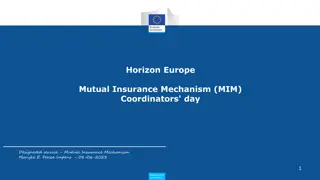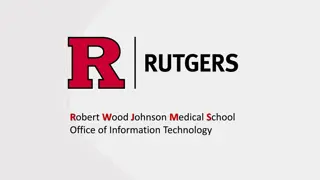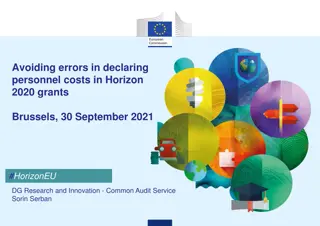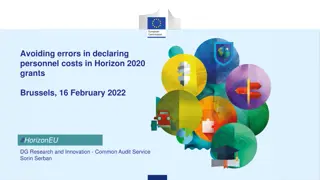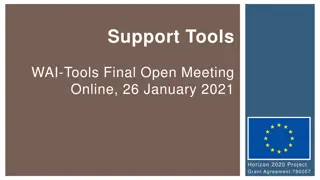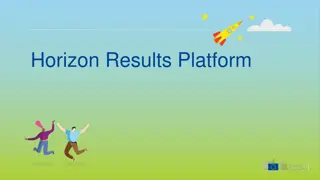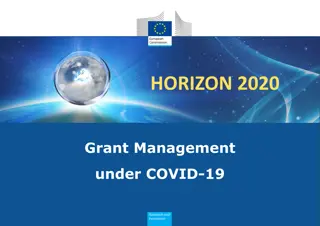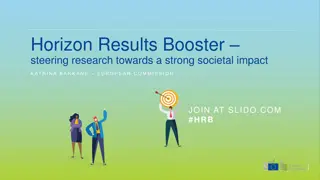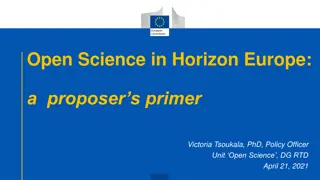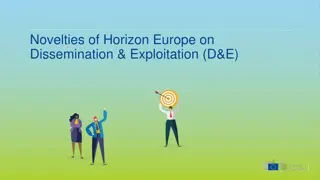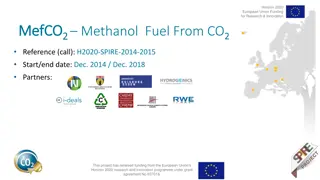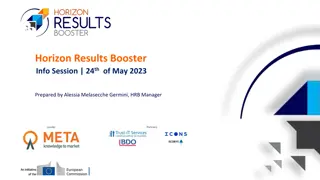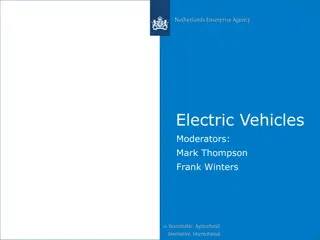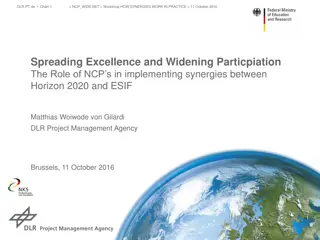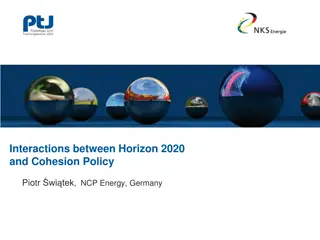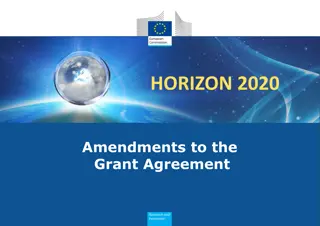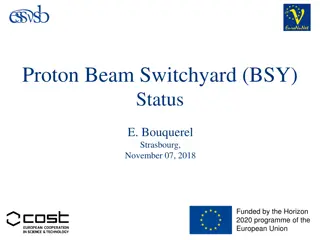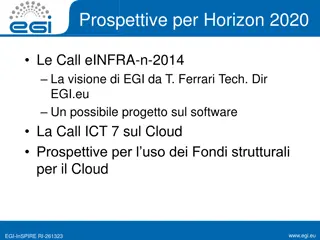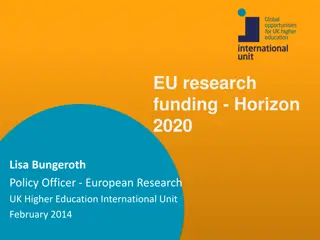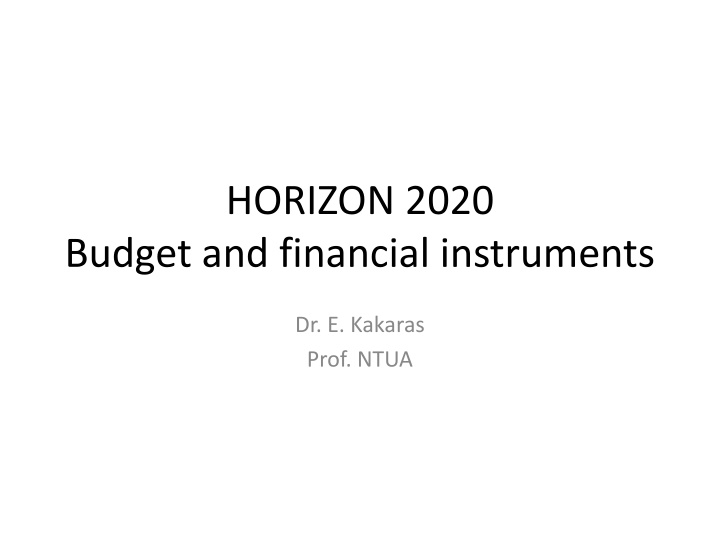
Horizon 2020 Budget and Financial Instruments
Explore the breakdown of the Horizon 2020 budget, financial instruments, and partnering opportunities in this comprehensive overview. Discover how Horizon 2020 aims to address societal challenges, promote innovation, and strengthen Europe's global position in research and technology.
Download Presentation

Please find below an Image/Link to download the presentation.
The content on the website is provided AS IS for your information and personal use only. It may not be sold, licensed, or shared on other websites without obtaining consent from the author. If you encounter any issues during the download, it is possible that the publisher has removed the file from their server.
You are allowed to download the files provided on this website for personal or commercial use, subject to the condition that they are used lawfully. All files are the property of their respective owners.
The content on the website is provided AS IS for your information and personal use only. It may not be sold, licensed, or shared on other websites without obtaining consent from the author.
E N D
Presentation Transcript
HORIZON 2020 Budget and financial instruments Dr. E. Kakaras Prof. NTUA
Contexts What is Horizon 2020 Breakdown of the Horizon 2020 Budget Horizon 2020 and partnering Horizon 2020 financial instruments
What is Horizon 2020 Initial Commission proposal for a 80 billion research and innovation funding programme (2014-2020); now just over 70 billion A core part of Europe 2020, Innovation Union & European Research Area: Responding to the economic crisis to invest in future jobs and growth Addressing people s concerns about their livelihoods, safety and environment Strengthening the EU s global position in research, innovation and technology
Breakdown of the Horizon 2020 Budget (2011 reference year) EUR million EU REGULATION (2014-2020) I Excellent science, of which: 1. The European Research Council 2. Future and Emerging Technologies 3. Marie Curie actions on skills, training and career development 4. European research infrastructures (including eInfrastructures) II Industrial leadership, of which: 1. Leadership in enabling and industrial technologies (+ICT) 2. Access to risk finance (part of budget may go to SETPlan, SMEs) 3. Innovation in SMEs III Societal challenges, of which 1. Health, demographic change and wellbeing; 2. Food security, sustainable agriculture, marine and maritime research and the bio- economy 4 ,152 of which 131 for EIT 3. Secure, clean and efficient energy 4. Smart, green and integrated transport 5. Climate action, resource efficiency and raw materials 6. Inclusive, innovative and secure societies European Institute of Innovation and Technology (EIT) (through Art6(3) & 26(1) H2020 Regulation ) 1,360 + 1,440 Non-nuclear direct actions of the Joint Research Centre EURATOM REGULATION (2014-2018) TOTAL HORIZON 2020 * 729 M for Euratom programme subject to Commision proposal in appropriate time 77,606 24,598 13,268 3 ,100 5,752 2,478 17,938 13,781 of which 436 for EIT 3,538 619 31,748 8,033 of which 254 for EIT 5,782 of which 183 for EIT 6,802 of which 215 for EIT 3,160 of which 100 for EIT 3,819 of which 121 for EIT 1,962 1,665 79,271*
Horizon 2020 and partnering Public private partnerships: Through Joint Technology Initiatives or other formal structures (Art. 187) Through contractual agreements, which provide inputs for work programmes Only when criteria met, e.g. clear commitments from private partners Public public partnerships: Through ERA-Nets for topping up individual calls/actions (replacing current ERA-Net, ERA-Net Plus, Inco-Net, Inno-net) Through participation in joint programmes between Member States (Art. 185) Supporting agendas of Joint Programming Initiatives when in line with Horizon 2020 Only when criteria met, e.g. financial commitments of participating countries European Innovation Partnerships: Not funding instruments, but for coordination with broader policies and programmes
Horizon 2020 financial instruments Part of the Horizon 2020 budget will not be provided through grant funding but in the form of risk-sharing (for loans and guarantees) and by providing risk finance (equity), aiming to Stimulate more investment in research and innovation, notably by the private sector Horizon 2020 Access to risk finance (sum) programme comprised of : Debt instrument Equity instrument Accompanying measures
Horizon 2020 financial instruments Debt finance: Loans Service for R&I ("RSFF II"): Loans and guarantees for investments in Research & Innovation; targeted at midcaps, larger companies, research institutes, stand-alone projects, PPPs, other entities; particular approach for innovative midcaps; loan amounts above EUR 7.5 million SME & small midcaps R&I Loans Service ("RSI II"): Loan guarantee facility for loans to research-intensive and innovative SMEs & small midcaps; loan amounts between EUR 25,000 to 7.5 million SME Initiative (under development, called by the June European Council): Joint Guarantee Instrument/ Securitization for loans to (innovative) SMEs and small midcaps; joint approach involving European Structural & Investment Funds (ESIF), HORIZON 2020 and COSME, with crucial support of EIB Group and Member States
Horizon 2020 financial instruments Equity finance: Early stage finance for innovative enterprises (notably seed and start-up companies); limited growth-stage finance also possible (successor to GIF-1) Pilot facility for technology transfer (under development) to bring R&D results from public research organisations and universities to the market (licensing; creation of spin-off companies) Accompanying measures: Technical and financial assistance (of EIB); improving investor readiness of start- ups, SMEs and small midcaps; piloting coinvestment by Business Angels; prizes for best practices in R&I finance etc.

